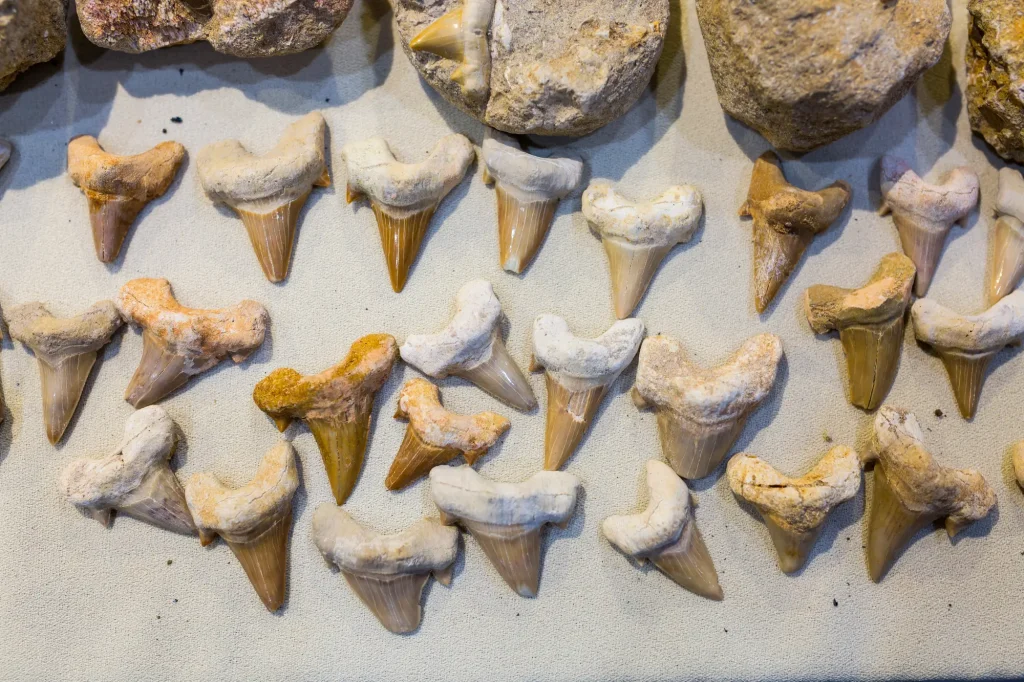Inspiring Kids: Shark Tooth Project and Ocean Advocacy
Explore Shark Tooth Forensics, a project that turns students into scientists, helping them uncover ancient oceans and protect sharks today.

Today’s Sharks In The News story will inspire young minds and sharks enthusiasts:
Sharks have always captured our imagination. Their teeth, sharp and ancient, tell a story millions of years old. What if students could help uncover that story? That’s the idea behind Shark Tooth Forensics (STF) — a program that brings real scientific discovery into classrooms. By studying fossilized shark teeth, students not only learn about ancient oceans but also connect with the importance of protecting sharks today.
What is Shark Tooth Forensics?
Shark Tooth Forensics is more than a classroom activity; it’s a hands-on science adventure. Part of the NSF-funded Students Discover program, STF allows students to work alongside researchers to study fossilized shark teeth. These teeth hold clues to the ecology of ancient sharks, revealing details about their diets, habitats, and roles in prehistoric ecosystems.
The program poses a fascinating question: “What was the world of ancient sharks like?” Through STF, students become part of the answer.
How STF Works: A Hands-On Paleontology Experience
The journey begins with sediment from fossil-rich areas, like the Atlantic Coastal Plain and parts of Africa. This sediment is shipped to schools, where students sift through it to uncover fossilized shark teeth.
Once a tooth is found, the real detective work begins. Students measure and classify each tooth, noting details like size, shape, and edge wear. Their findings are added to a shared database used by researchers.
Teachers receive lesson plans that tie these activities to subjects like math and science. For instance, students might calculate tooth dimensions, explore geometric shapes, or discuss what the fossils reveal about ancient marine life.
Why Shark Tooth Forensics Matters
Scientific Impact
Shark teeth are like tiny time capsules. They offer a glimpse into ancient oceans and the predators that dominated them. By studying these fossils, researchers can learn about ecosystems from millions of years ago. The data students collect is surprisingly reliable, helping scientists answer big questions about prehistoric life.
Educational Benefits
For students, STF turns learning into an adventure. They get to solve real-world puzzles, work as a team, and see how science can uncover the past. It’s an experience that builds curiosity and critical thinking skills, showing students that they can be part of something bigger.
Connecting STF to Shark Conservation
From Fossils to Modern Sharks
Understanding ancient sharks helps us appreciate the ones we have today. Sharks play a vital role in keeping oceans healthy. Projects like STF show students why protecting these creatures is so important.
Building Advocacy
Early experiences with science can spark lifelong passions. By engaging with STF, students not only learn about sharks but also develop a deeper connection to the oceans. They begin to see themselves as advocates for marine life, ready to protect what they’ve come to understand and love.
Challenges and Future Opportunities
| Challenges | Opportunities |
|---|---|
| Bringing STF to life isn’t without its hurdles. Collecting and distributing sediment takes time and resources. | The potential, however, is huge. STF could expand to include more schools and even go global. Virtual tools could make the program accessible to students everywhere. |
| Ensuring consistent methods across classrooms can also be tricky. | The findings from STF could also support conservation efforts, linking the past to the future. |
Inspiring the Next Generation of Ocean Advocates
Shark Tooth Forensics isn’t just about fossils; it’s about inspiring young minds. By giving students a role in real science, the program opens their eyes to the wonders of the natural world. It’s an experience they won’t forget.
Through STF, students learn that they have the power to make a difference. They see how science can solve mysteries, connect people, and protect the planet. That’s a lesson that lasts a lifetime.
Final Thoughts
Shark Tooth Forensics is more than a science project. It’s a chance for students to step into the shoes of researchers and discover the wonders of ancient oceans. By doing so, they not only contribute to science but also take their first steps as advocates for sharks and the oceans.
If you’re an educator, parent, or scientist, consider supporting programs like STF. Together, we can inspire the next generation to protect our planet and its incredible creatures.
FAQs
Yes, it’s possible to extract DNA from a shark tooth, but the conditions have to be just right. The tooth needs to be well-preserved, and even then, extracting DNA is a delicate process. Scientists often rely on the tooth’s physical traits for most research.
In some cultures, people believe shark teeth bring good luck or protection. They’re often seen as symbols of strength and courage, making them popular as charms or jewelry.
Identifying shark teeth fossils involves looking at their size, shape, and serrations. Different species have distinct tooth shapes. For example, triangular teeth might belong to predators like great whites, while slender teeth are often from smaller, fish-eating sharks.
This term isn’t about fossils. It’s a dental condition in kids where adult teeth grow behind baby teeth, creating a double row that resembles a shark’s mouth.
Shark teeth are often thought to ward off danger or bring good fortune. Many people wear them as necklaces or keep them as talismans, believing they offer protection and strength.
